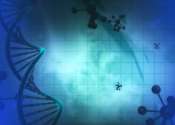Biopharming technique yields cost-effective and environmentally friendly antimicrobial peptides
Plants engineered to produce therapeutic peptides could provide a cost-effective and sustainable platform for manufacturing drugs.

Plants engineered to produce therapeutic peptides could provide a cost-effective and sustainable platform for manufacturing drugs.
Cell & Microbiology
May 10, 2023
0
19

Lipstick can be a confidence booster, enhance a costume and keep lips from chapping. But sharing a tube with a friend or family member can also spread infections. To develop a version with antimicrobial properties, researchers ...
Biochemistry
Dec 16, 2022
0
138

An international research team led by Professor Stephanie Grond from the Institute of Organic Chemistry at the University of Tübingen has found that the natural substance collinolactone reduces artificially-induced stress ...
Biochemistry
Oct 7, 2021
0
251

As far back as ancient Rome, spider silk has been used as a remedy to treat everything from skin lesions to warts. In the past, doctors have covered open wounds in cobwebs or advised patients to place cocoons on infected ...
Plants & Animals
Oct 5, 2021
3
15

Researchers at Children's Hospital of Philadelphia (CHOP) have developed a novel method for producing new antibiotics to combat resistant bacteria. Through an approach that would target bacteria with an antibiotic that is ...
Molecular & Computational biology
Jul 19, 2021
0
44

Microorganisms possess natural product biosynthetic gene clusters (BGCs) that may harbor unique bioactivities for use in drug development and agricultural applications. However, many uncharacterized microbial BGCs remain ...
Molecular & Computational biology
Feb 19, 2021
0
84

A discovery by researchers at the Los Angeles Biomedical Research Institute (LA BioMed) has uncovered a common blueprint for proteins that have antimicrobial properties. This finding opens the door to design and development ...
Biochemistry
Mar 19, 2019
1
97

The small but charismatic Hawaiian bobtail squid is known for its predator-fooling light organ. To survive, the nocturnal cephalopod depends on a symbiotic association with a luminescent bacterium that gives it the ability ...
Plants & Animals
May 15, 2014
0
0
Findings of Cambridge scientists, published today in the journal PLoS Pathogens, show a new mechanism used by bacteria to spread in the body with the potential to identify targets to prevent the dissemination of the infection ...
Cell & Microbiology
Dec 6, 2012
0
0
.jpg)
(Phys.org)—Scientists at the University of Bristol, together with collaborators at the University of Aveiro, Portugal, have solved the structure of an enzyme that breaks down carbapenems, antibiotics 'of last resort' which, ...
Analytical Chemistry
Nov 9, 2012
0
0